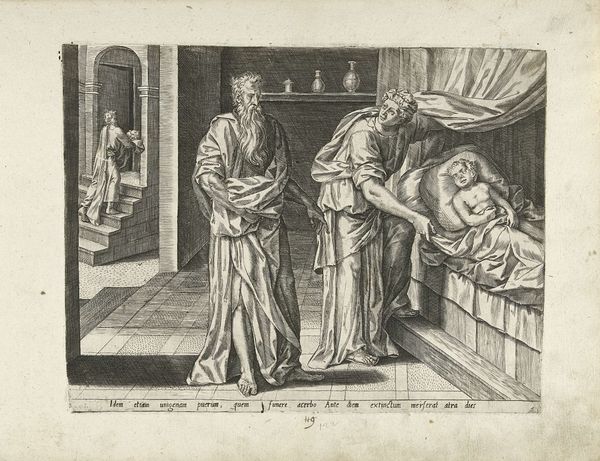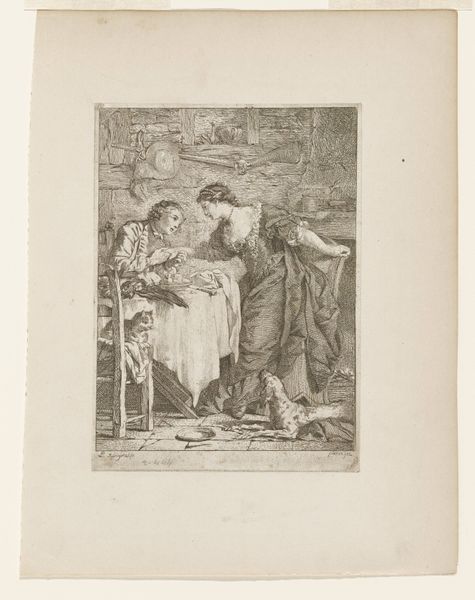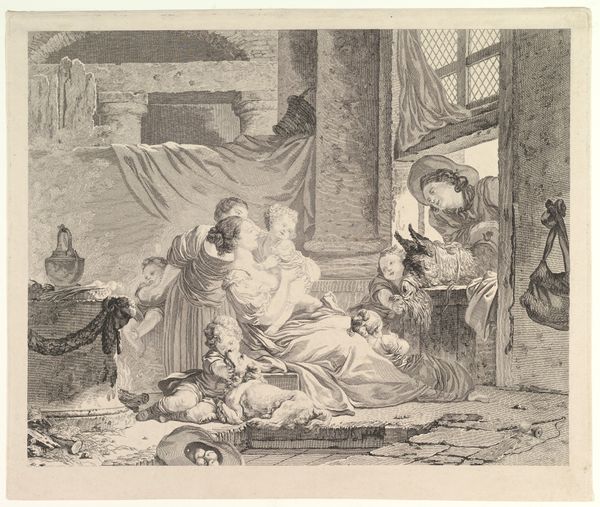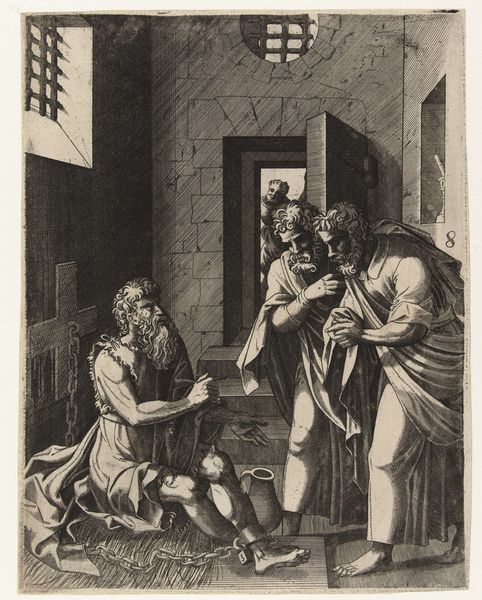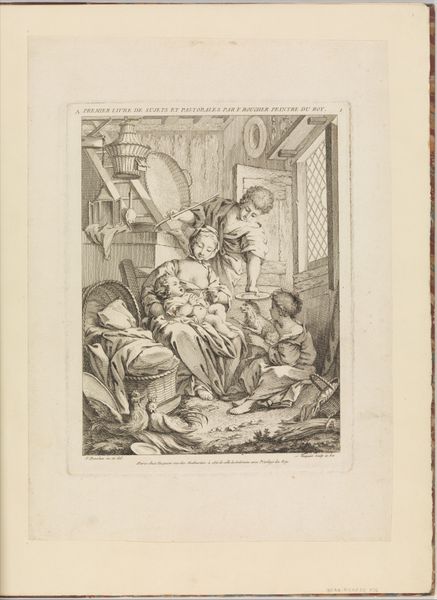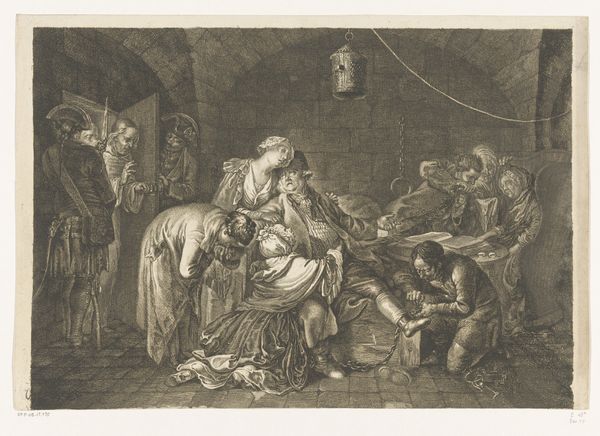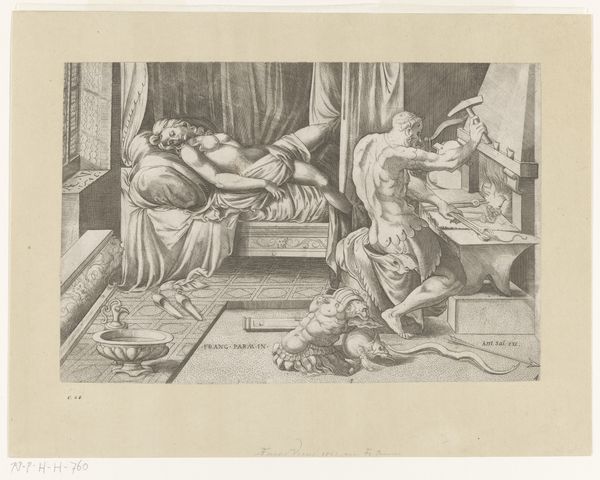
The Rising from the Dead of the Son of the Widow Possibly 1852 - 1860
0:00
0:00
print, woodcut
#
medieval
#
narrative-art
# print
#
figuration
#
woodcut
#
history-painting
Dimensions: 8 9/16 x 10 3/16 in. (21.75 x 25.88 cm) (image)10 3/16 x 12 7/16 in. (25.88 x 31.59 cm) (sheet)
Copyright: Public Domain
Curator: Immediately, I'm struck by the intensity of emotion rendered through such precise lines. It feels almost…claustrophobic? The black and white amplifying the dramatic light. Editor: Well, let's provide some context. We are looking at "The Rising from the Dead of the Son of the Widow" by Julius Schnorr von Carolsfeld, likely created between 1852 and 1860. It's a woodcut, currently residing at the Minneapolis Institute of Art. I am curious to the material production. How long would this process of woodcutting took with the given detail. Curator: Knowing it's a woodcut makes the precision even more amazing, doesn't it? Look at the way the lines suggest folds in fabric, the texture of the walls... I can almost feel the stifling grief in the room, amplified by the widow slumped in the corner there. Editor: Yes, the subject matter is classic. History painting meeting figuration. But consider the sheer labor involved. Each line carefully carved. Think of the artist's hand, the tools they used, the precise knowledge of wood required to even begin this process. I wonder what kind of wood did he use, the available materials at the time? What level of skill the work demanded that separates art with craft? Curator: I’m immediately drawn into the way the scene is composed and staged. It’s as if the artist intends us to ask, to witness the mystery unfolding. Did they do sketches? Did they know if this art would gain prominence? It makes me feel I’m reading pages of illuminated texts Editor: Precisely! It's all about craft in its most dedicated, and also consider this kind of material as commodity to reproduce narratives to different layers of society through consuming art Curator: Right, a reproducible image democratizes a historical narrative. The themes of figuration and history intermix with accessibility. What lingers for me is how Schnorr von Carolsfeld translated such a profoundly spiritual moment into something tangible and shareable. Editor: For me, it is the evidence of process. This art object serves as a way to discuss the time it would take. The tools employed. Labor given to materialize it for people to connect to and understand the relationship of spiritual production of craft and dissemination.
Comments
No comments
Be the first to comment and join the conversation on the ultimate creative platform.

